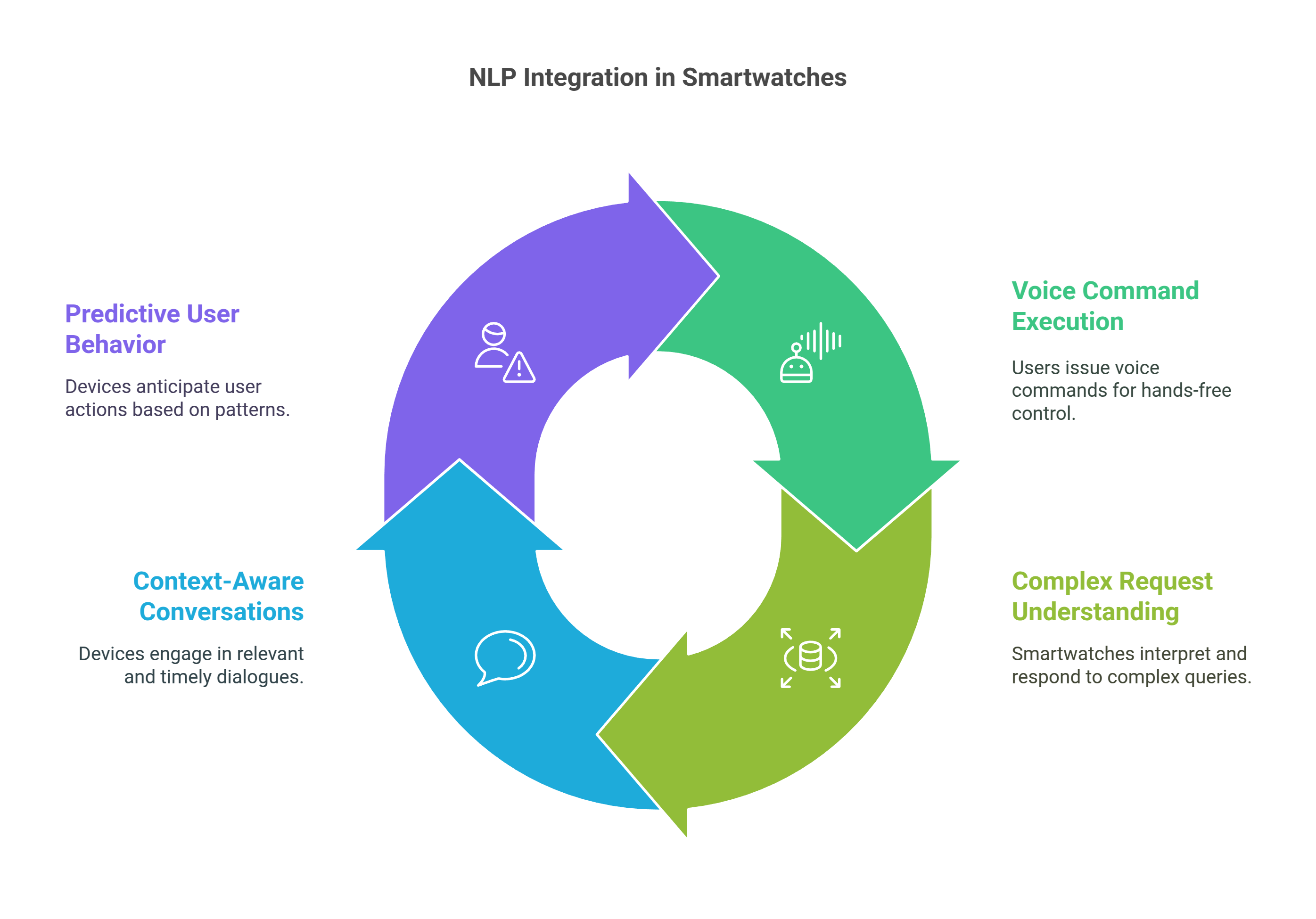

NLP is a technology that enables computers and devices to understand, interpret, and respond to human language in a way that is both meaningful and effective. It forms the backbone of many smart devices, including smartwatches, by allowing them to process and comprehend spoken or written text. As smartwatches become more integrated into our daily lives, NLP plays a crucial role in facilitating voice commands, offering hands-free control, and enhancing user interaction. With advancements in NLP, your smartwatch can go beyond just basic voice commands; it can understand complex requests, engage in context-aware conversations, and even predict user behavior based on past interactions.


NLP in smartwatches leverages a variety of advanced techniques to process and understand human language. These techniques include speech recognition, which converts spoken words into text, and semantic analysis, which interprets the meaning behind the words. Once a command is given, the smartwatch uses machine learning algorithms to understand the context, intent, and possible follow-up actions. For example, if you ask your smartwatch, “What’s the weather like today?” it will not only recognize the words but also understand that you’re referring to weather information for the current day.
NLP allows smartwatches to evolve beyond simple voice commands. Through continual learning, your smartwatch can understand your preferences and tailor responses accordingly. For instance, if you frequently ask your smartwatch for traffic updates during your morning commute, it may learn to automatically offer you traffic information at that time without you needing to ask. It can also remember your common questions and give more personalized answers, whether you’re asking about the weather, your schedule, or even health-related inquiries.
One of the most significant advances in NLP is contextual understanding. Unlike earlier versions of voice assistants, which often struggled with vague or ambiguous commands, modern smartwatches with advanced NLP can take into account the context of your request. For instance, if you ask, “Send a message to Mom,” the smartwatch doesn’t just send a generic message. It understands the context of “Mom” as a contact in your address book and can even offer suggestions based on past conversations or actions. This makes the experience far more intuitive and human-like.
The use of NLP in smartwatches opens up a wide range of practical applications. For example:
With advancements in NLP and machine learning, the future of smartwatches looks even more promising. As technology improves, expect even more sophisticated and personalized interactions that enhance the overall user experience.
As the Director and CTO of IRI, a company specializing in data and software validation with a focus on resource tracking solutions. With a background in Computer Science Engineering and expertise in web development, he leads the technological vision of the company, ensuring innovation and scalability.
Smart Fingerprint technology enables fast, secure, and error-free attendance tracking . . . . . .
Blockchain, is a game-changing technology with diverse applications. This blog simplifies what blockchain . . . .
AI Agents are transforming industries by making real-time decisions, automating workflows, and improving efficiency. From chatbots to self-learning business tools, these intelligent systems are . . .